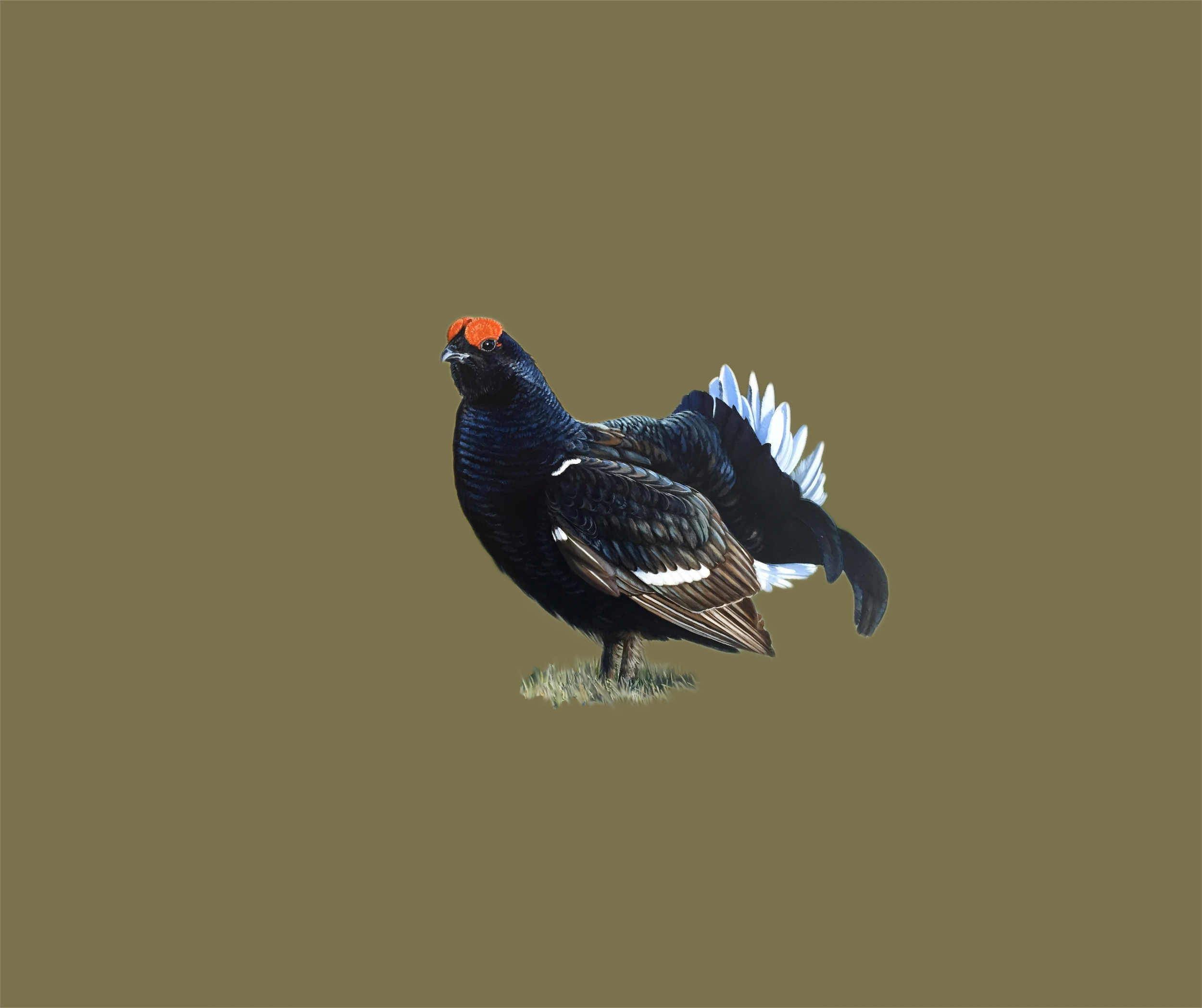Black Grouse Tetrao tetrix

Computer-generated image © Colin R Casey.
Was formerly a resident on heaths and commons of the north-west, on the unenclosed moors between Lincoln and Nottinghamshire and in the Woodhall Spa area. Cordeaux (1872) thought birds had been introduced to the Frodingham district, where Scunthorpe steel works now stands, earlier in the 19th century. Lorand and Atkin (1989) state the population was reinforced with introductions prior to the 1870s. They died out on Whisby Moor in 1842 and on Stapleford Moor in 1883. Birds lingered on in the Woodhall Spa district until about the 1870s and on Brumby Common and Twigmoor Warren until 1900. By the 20th century birds were confined to Scotton Common. There were still several pairs present in 1920 and 18 birds were flushed together during the 1921/22 winter. Chicks were seen in 1922 and the last confirmed breeding was of two nests found there by keepers in the early 1930s. The final sighting was of a lone greyhen reported on June 10th 1935.
The nearest other population of Black Grouse in modern times, in the Peak District, died out in 2000 (BTO Bird Atlas 2007-11). Despite a re-introduction scheme financed by Severn-Trent Water Authority which began in 2003 in the Upper Derwent Valley, and which released over 200 birds during a five-year period, none were left by 2011. If such a scheme were ever to be attempted or be successful in Lincolnshire, the fragmentation and quality of remaining suitable habitat would have to be addressed.
(Account as per new Birds of Lincolnshire (2021), included September 2022)

